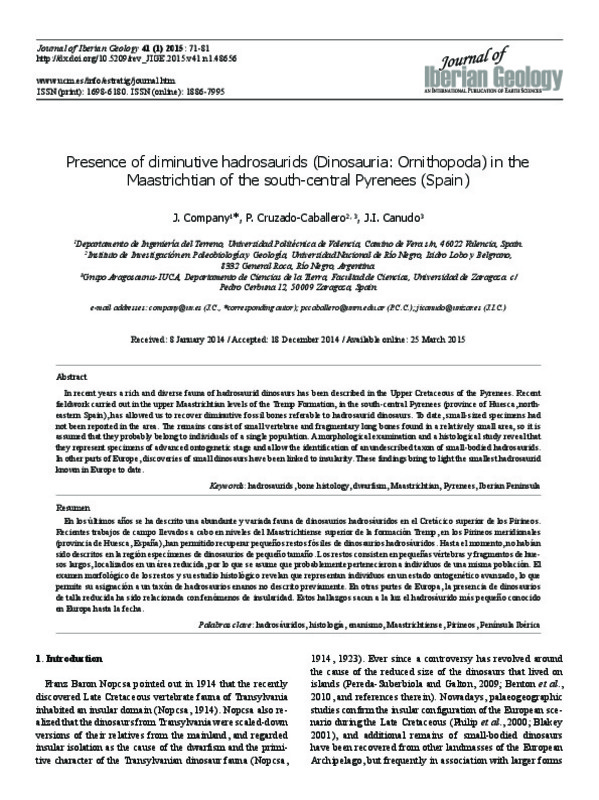JavaScript is disabled for your browser. Some features of this site may not work without it.
Buscar en RiuNet
Listar
Mi cuenta
Estadísticas
Ayuda RiuNet
Admin. UPV
Presence of diminutive hadrosaurids (Dinosauria: Ornithopoda) in the Maastrichtian of the south-central Pyrenees (Spain)
Mostrar el registro completo del ítem
Company Rodríguez, J.; Cruzado Caballero, P.; Canudo, J. (2015). Presence of diminutive hadrosaurids (Dinosauria: Ornithopoda) in the Maastrichtian of the south-central Pyrenees (Spain). Journal of Iberian Geology. 41(1):71-81. doi:10.5209/rev_JIGE.2015.v41.n1.48656
Por favor, use este identificador para citar o enlazar este ítem: http://hdl.handle.net/10251/75866
Ficheros en el ítem
Metadatos del ítem
| Título: | Presence of diminutive hadrosaurids (Dinosauria: Ornithopoda) in the Maastrichtian of the south-central Pyrenees (Spain) | |
| Autor: | Cruzado Caballero, P. Canudo, J. | |
| Entidad UPV: |
|
|
| Fecha difusión: |
|
|
| Resumen: |
In recent years a rich and diverse fauna of hadrosaurid dinosaurs has been described in the Upper Cretaceous of the Pyrenees. Recent fieldwork carried out in the upper Maastrichtian levels of the Tremp Formation, in the ...[+]
|
|
| Palabras clave: |
|
|
| Derechos de uso: | Reserva de todos los derechos | |
| Fuente: |
|
|
| DOI: |
|
|
| Editorial: |
|
|
| Versión del editor: | http://dx.doi.org/10.5209/rev_JIGE.2015.v41.n1.48656 | |
| Código del Proyecto: |
|
|
| Agradecimientos: |
This paper forms part of the projects CGL2010-16447, CGL2010-18851/BTE and CGL2013-47521-P, subsidized by the Spanish Ministerio de Economia y Competitividad and the European Regional Development Fund. In addition the ...[+]
|
|
| Tipo: |
|









